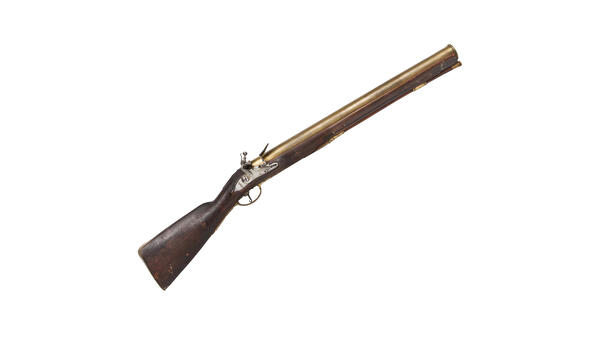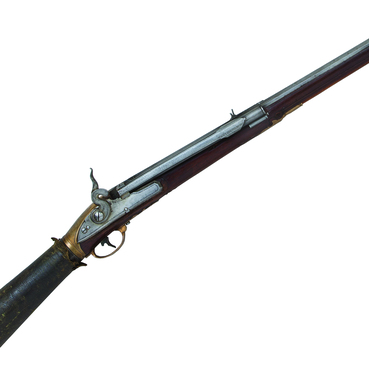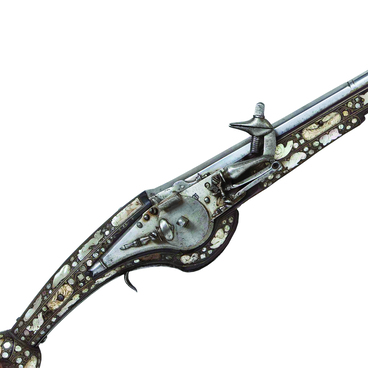The collection of hunting weapons of the 16th–19th centuries in the Gatchina Palace and Estate Museum includes a flintlock blunderbuss. It was made by the gunsmith Thomas Henshaw in London during the period from the 1740s to 1760s.
Before being transferred to Gatchina in the second half of the 18th century, many guns and pistols were kept in other European armouries. It is obvious from their inventory numbers cut or stamped on a trigger guard — a part which covered the trigger preventing its accidental release. Unfortunately, this blunderbuss does not have any numbers so it has not yet been established to which collection it originally belonged. In England, Holland, France, Italy and other countries the blunderbuss could be called ‘tromblon’, ‘espingole’ or ‘mousqueton’.
Guns of this type appeared in the middle of the 16th century. First they were used mostly in the navy, and in the second half of the 17th century — in the infantry as well. Blunderbusses were very popular with Spanish smugglers as well as with pirates who continued to use them till the early 20th century. They called this type of gun ‘trabuco’ and the word gave them the name ‘trabuqueros’. Apart from blunderbusses there were pistols of similar construction, which were very popular from the middle of the 18th century till the first half of the 19th century. The barrel of the flintlock blunderbuss is made of bronze, while the breech and its tang — of iron.
On the left side of the barrel at the breech end there are three marks: two belong to the London company of gun makers — the letter ‘V’ under a crown and the letters ‘GP’ under a crown — and the third is a personal mark of the gunsmith — the letters ‘T H’ under a crown. The fore-end runs all the way to the muzzle.
The stock has a cheek rest. The barrel is fixed to the stock with a screw, which goes through the tang of the breech, with the rear side screw going through a lug in the breech plug, and with two barrel pins. The brass furniture includes a butt cap, a trigger guard, a lock bridle and two ramrod pipes.


